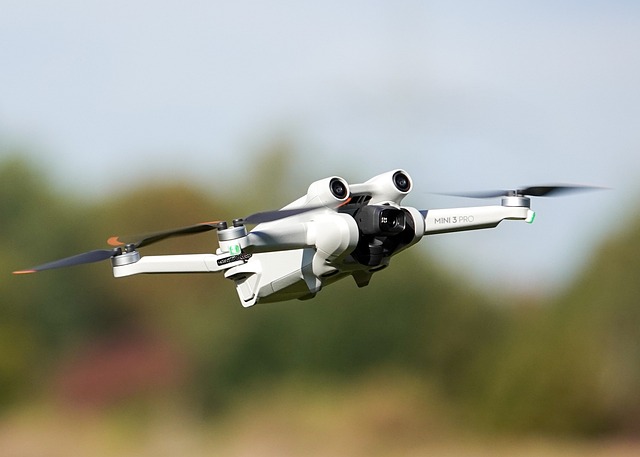Introduction

Drones, also known as unmanned aerial vehicles (UAVs), are transforming industrial asset management practices. Equipped with advanced sensors and imaging capabilities, drones provide an aerial perspective for inspecting, monitoring, and managing assets.
Over the last decade, drone technology has rapidly evolved thanks to innovations in imaging, navigation systems, battery life, and automation. Today’s drones are highly capable of performing specialized tasks such as infrastructure inspections and 3D mapping.
Key benefits of using drones for asset management include:
- Enhanced data collection and analysis
- Improved maintenance planning
- Increased efficiency
- Better operational visibility
- Reduced safety risks
By leveraging drone technology, companies can gain greater insight into the condition of their assets while increasing productivity and minimizing costs. Drones enable asset managers to perform rapid inspections, detect potential issues early, and develop data-driven maintenance strategies.
Conducting Asset Inspections

Drones equipped with high-resolution cameras, LiDAR sensors, and other imaging technology are enabling greatly improved asset inspections compared to manual visual inspections. Rather than relying on technicians climbing tall structures and observing conditions, drones can be sent to collect detailed imagery and data on asset conditions.
Drones are able to access hard to reach assets like offshore oil platforms, flare stacks, storage tanks, bridges, and other structures. This allows for comprehensive data collection on areas that may not be visible or accessible to human inspectors. The high-resolution imagery and 3D models created by drones provide engineers and managers much richer information than manual walk-around inspections.
Sensors like thermal cameras can detect hot spots and cold spots, indicating potential equipment faults or leaks. LiDAR scanners create detailed 3D point clouds that can precisely measure corrosion, deformation, and other structural issues. All this data can be analyzed to detect changes over time and predict potential failures before they occur.
By leveraging drone technology, companies are able to conduct more frequent and thorough inspections of their assets. This leads to earlier detection of problems, better planning of maintenance activities, and ultimately reduced operational risks and costs. Drones have become an invaluable tool for proactive asset management programs.
Monitoring Infrastructure Integrity
Drones equipped with advanced sensors and imaging capabilities can provide real-time data on the health of infrastructure such as bridges, roads, pipelines, and energy assets. By conducting frequent drone inspections, issues can often be identified before any failures or accidents occur.
Thermal imaging cameras on drones can detect hot spots and temperature changes that may indicate problems like corrosion, loose connections, or insulation breakdowns. The high-resolution photos and 3D models created by drones document the infrastructure state over time. Any tiny cracks, material degradation, or subtle shifts can be flagged for preventive maintenance before causing a disruption in operations.
This regular monitoring and early diagnosis of problems enabled by drones ultimately helps improve infrastructure reliability and lifespan. Facility managers gain actionable data to prioritize maintenance tasks and repairs before they balloon into major failures or safety risks. The imagery captured by drones also provides visual documentation to track infrastructure health over the long term.
Enhanced Maintenance Planning
Drones provide facilities managers with visual and sensor data that enables more effective maintenance planning and scheduling. By conducting regular drone inspections and monitoring asset condition in real-time, issues can be identified earlier before they become major problems. This allows for predictive maintenance and repair activities to be planned proactively.
The high-quality aerial imagery and data captured by drones gives a comprehensive view of asset status across sites. With this detailed information, maintenance teams can pinpoint specific assets or components that require attention and plan targeted interventions. This helps reduce unnecessary maintenance and downtime.
Drone data and analytics make it possible to optimize maintenance schedules based on actual asset performance and wear. rather than relying on time-based approximations. Assets that are performing well can have their maintenance intervals adjusted accordingly, while problematic assets can receive more frequent inspections and servicing. This data-driven approach to maintenance significantly improves operational efficiency and uptime.
By leveraging drone technology for enhanced maintenance planning, industrial facilities and infrastructure owners can maximize the lifespan of critical assets while minimizing disruptive downtime. The actionable data provided by drones is key for transitioning from reactive to predictive maintenance programs.
Increased Efficiency

Drones equipped with advanced sensors and imaging capabilities can drastically increase efficiency for industrial asset management. By automating inspection processes that previously required manual oversight, drones allow for faster data collection without the need for as many manned inspection flights.
Some of the key ways drones improve efficiency include:
- Automating Inspections: Drones equipped with LiDAR, thermal sensors, and high resolution cameras can autonomously scan infrastructure and collect vast amounts of visual data. This automates time-consuming manual inspection processes.
- Faster Data Collection: Drones can cover a lot of ground quickly, gathering huge volumes of visual data in a fraction of the time it would take human inspectors. For example, drones can scan miles of oil pipelines, wind turbines, or power lines in a single flight.
- Reduced Manned Flights: With drones that can fly pre-programmed routes and automatically scan assets, fewer time-consuming and dangerous manned inspection flights are needed. One drone can often replace several human inspectors.
The efficiency gains from using drone technology allow industrial companies to cut costs while improving the frequency and coverage of their inspection processes. Drone-based asset management leads to better maintenance planning and increased uptime.
Improved Safety
Drones can greatly improve safety in industrial asset management by reducing the need for risky manual inspections. Sending drones to inspect assets like oil rigs, pipelines, towers, and other industrial infrastructure removes the risk to human inspectors who would normally have to access these structures personally.
Drones equipped with cameras and sensors can get views of hard-to-reach places like the underside of bridges, the top of wind turbines, confined spaces, or contaminated areas. This allows infrastructure owners to detect any potential issues without putting inspectors in harm’s way. Drones provide the ability to thoroughly scan these dangerous areas from a safe distance.
In addition, drones can efficiently access remote locations that would otherwise require inspectors to travel long distances through difficult terrain. Using drones significantly lessens safety risks that come with manual inspection processes. With a drone workforce, companies can save money and lives by avoiding the dangers of working at height or sending people into hazardous industrial environments.
Integration With Asset Management Systems
Integrating drones and the data they collect into existing asset management systems can be challenging but is crucial for realizing the full benefits of drone technology. Drones can generate immense amounts of visual, thermal, and spatial data.
In conclusion
The utilization of drones in industrial asset management marks a transformative shift in efficiency, safety, and cost-effectiveness. By providing aerial perspectives and advanced data analytics, drones enable industries to monitor, inspect, and manage assets with unprecedented precision and speed. From infrastructure to energy, agriculture to construction, the potential applications are vast and varied. Embracing drone technology empowers companies to optimize operations, minimize downtime, and enhance overall productivity. As we continue to witness advancements in drone technology and regulations, it’s evident that the sky is not the limit, but rather the beginning of a new era in industrial asset management.



